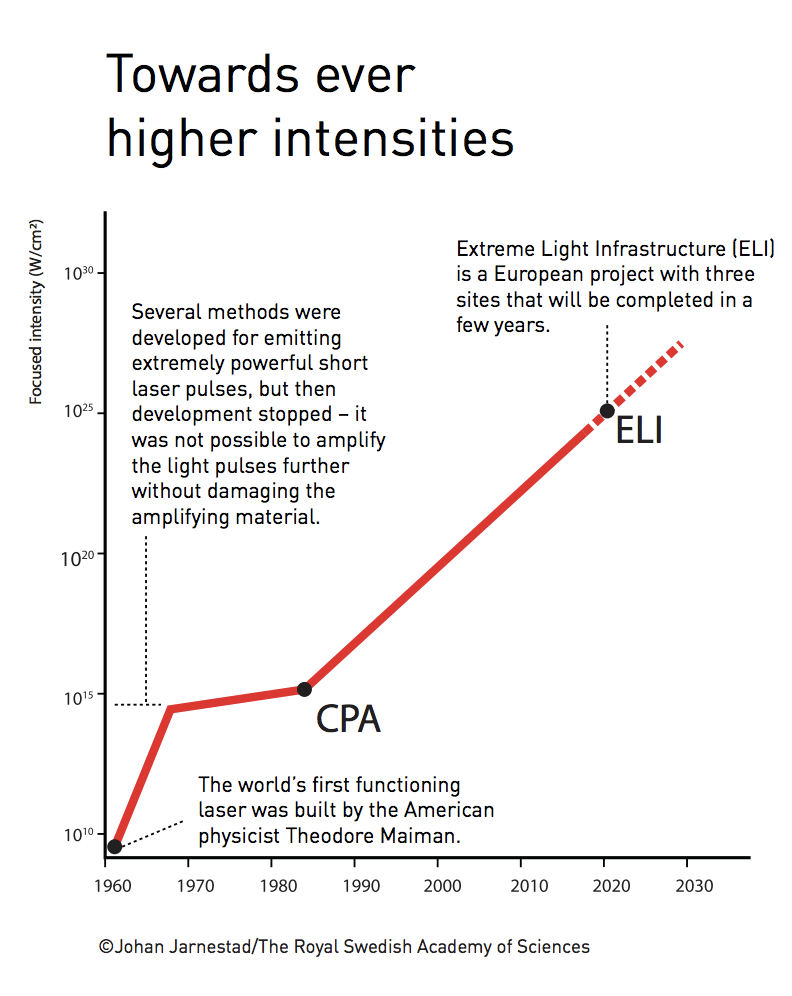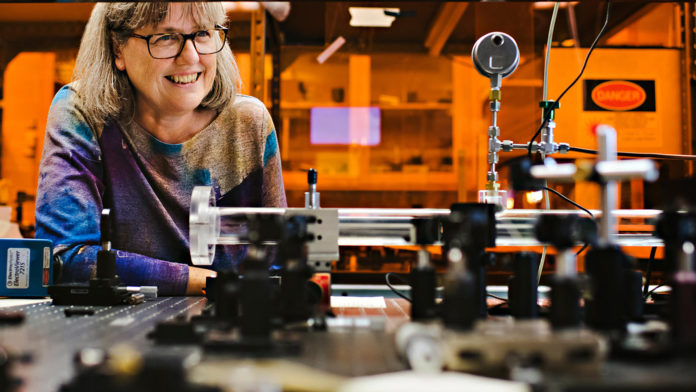In a stunning win for basic research, early-career scientists, and women in STEM, Canadian physicist Donna Strickland was one of three researchers awarded the 2018 Nobel Prize in Physics for her work on chirped pulse amplification (CPA) of laser light. This work paved the way for drastically shorter and more intense laser pulses, enabling everything from laser eye surgery, to precision cutting for electronics, to ultra-fast cameras that can peer into chemical reactions, and even inside individual atoms.
Adam Smith, Chief Scientific Officer of Nobel Media, noted in an interview with Strickland that he wasn’t aware of any other cases of a Nobel Prize being awarded for a laureate’s very first scientific paper.
Strickland’s development of CPA formed the basis for her doctoral thesis with her PhD supervisor and now joint Nobel Prize winner Gérard Mourou.
Strickland and Mourou also share their Nobel win with Arthur Ashkin, who invented optical tweezers for the manipulation of particles, atoms, and cells with laser light.
Strickland is also the first female scientist to receive a Nobel Prize in Physics in 55 years, and only the third in history (after Marie Curie in 1903 for the discovery of radioactivity and Maria Goeppert Mayer in 1963 for developing a mathematical model that predicts nuclear structure and stability).
Before the development of CPA, the intensity of laser pulses was restricted because amplifying high intensity pulses destroyed the material used to amplify them.

CPA uses a three-step process to avoid this. First, an ultra-short laser pulse is stretched out in time, temporarily reducing its intensity. Next, the low-power stretched pulse is safely amplified. Finally, the pulse is compressed back to its original duration, producing a short burst of light packed into a very precise and small space. The result is a highly intense and sharp pulse of laser light that conventional amplification had been unable to match.
While many other researchers at the time had the same goal, Strickland and Mourou were the first to stretch the original pulse for subsequent amplification.
CPA remains the standard for high intensity lasers.

While CPA remains best known for its role in laser eye surgery, its potential in medicine and atomic physics has yet to be fully explored, underscoring the importance of basic research in unlocking future applications.
“People have to realize that to go from the pure to the final takes a lot of effort but if we don’t have people doing the front-end research eventually you run out of things to work on,” said Strickland in a statement.
Now a professor at the University of Waterloo, Strickland continues her research on the manipulation of light, focussing on intense laser-matter interactions, nonlinear optics, and short-pulse, intense laser systems.










































